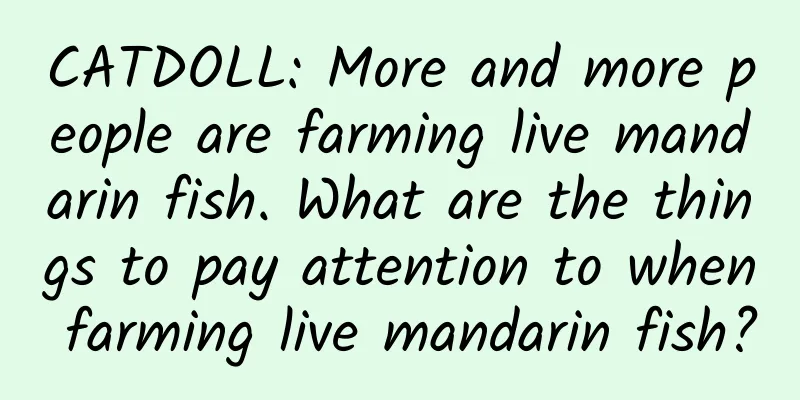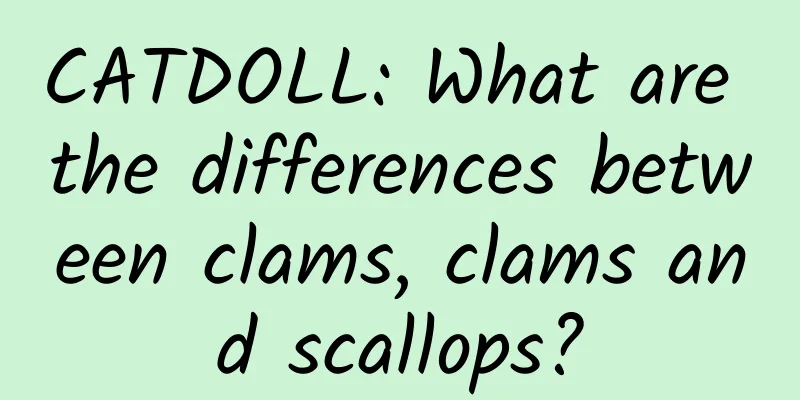CATDOLL : CATDOLL: Why do Koi get Saprolegniasis?

1. Why do koi get water mold disease?Saprolegnia is widely found in fresh or brackish waters and moist soils around the world. It is a common mold that grows saprophytically on dead organic matter. The main orders include Saprolegniales, Peronosporales and Leptomitales, with Saprolegnia being the most common. It grows best at 10-15°C. When the temperature is above 25°C, the reproduction capacity of the zoospores in each species is weakened, making it less susceptible to infection. It can occur in trout almost all year round. The occurrence of Saprolegniasis is mainly due to secondary infection caused by stress. When fish are injured in body surface tissues due to crowding, movement or other adverse environmental factors, the Saprolegniasis spores in the water will take the opportunity to attach and begin to germinate and form hyphae on the necrotic tissue. In addition to parasitizing on the necrotic tissue, the hyphae can also spread and invade nearby normal tissues, secrete digestive enzymes to decompose the surrounding tissues, and even penetrate the dermis and deep into the muscles, causing necrosis and disintegration of the skin and muscles. The hyphae on the surface extend outward to form a cotton-like covering, and form sporangia at the end, releasing zoospores into the water, which spread everywhere through the water. symptom 1. A grayish-white, cotton-like covering forms at the site of infection. 2. The lesions are round in the early stage and irregular patches in the later stage. In severe cases, the skin is damaged and the muscles are exposed. 3. The gill tissue will also be invaded and infected, causing death. diagnosis 1. Observe the cotton-like covering on the body surface. 2. Slide the affected area and examine it under a microscope, where the hyphae and sporangia of Saprolegniasis can be observed. 3. The identification of fungal species requires cultivation and identification. [Edit this section] Treatment 1. Formalin 100~250ppm, flow bath for 1 hour. 2. Salt 1~1.5%, 20~30 minutes. 3. Malachite green Eating fish is prohibited. 4. Antibiotic treatment is required when mixed bacterial infection occurs. 5. Methylene blue 2ppm can be used again the next day to achieve good results. There is no need to change the water in time, and the water color will become lighter as the drug decomposes. You can consider changing the water appropriately after 3 days. Preventive measures: ⑴Prevention of Saprolegniasis in Fish ① Remove excess silt from the bottom of the pool and disinfect it with 200 mg/L quicklime or 20 mg/L bleaching powder. ② Strengthen feeding management, improve fish resistance, and try to avoid fish injuries. ③ When broodstock are injured during artificial breeding, 10% potassium permanganate aqueous solution can be applied to the injured area. If the injury is serious, 50,000 to 100,000 units/kg of fish of streptomycin need to be injected intramuscularly or intraperitoneally. ⑵Prevention of fish egg saprolegniasis ① Strengthen parent fish cultivation, improve the fertilization rate of fish eggs, and choose sunny weather for breeding. ② After cleaning the fish nest, boil it for disinfection (for fish nests made of palm bark), or use salt, bleaching powder and other drugs to disinfect (for fish nests made of polythene grass, duckweed, etc.). ③ Clean and disinfect the spawning pool and hatching equipment. ④ Using water sprinkling for incubation can reduce the occurrence of Saprolegniasis. ⑤ There should not be too many fish eggs stuck on the fish nest, so as to prevent the fish eggs underneath from suffocating and dying due to lack of sufficient oxygen, and then being infected by Saprolegnia which will further endanger the health of the fish eggs. The above is based on online inquiries. Personally, I think that adding more salt, raising the temperature, and adding formalin are more effective. Malachite green is highly toxic, so forget it. 2. Suspected carp has white spot diseaseWhite spot disease is caused by Ichthyophthirius punctatus. It is not easy to kill Ichthyophthirius punctatus by cleaning the fish tank with salt water. Soaking the fish tank in water above 40 degrees for 20 minutes can completely kill Ichthyophthirius punctatus. The water temperature should be raised to above 30 degrees. Goldfish can tolerate water temperatures below 34 degrees, but the water temperature should be raised slowly. Sudden changes in water temperature can cause the fish to catch a cold or capsize, which are difficult to treat. This disease cannot be cured immediately. The water temperature needs to be kept at 30 degrees for about a week to be basically cured. Just add a heating rod in the aquarium. To treat white spot disease, you need to change one-third of the water, add oxygen, and raise the water temperature to 30 degrees. If there are scavengers in the tank, do not add salt or medicine. Scavengers are not tolerant to salt or medicine. Adding salt or medicine can easily lead to the death of scavengers. 3. There is a layer of white stuff on the body of the small carp I raise. Why?It doesn't matter, you can add appropriate salt to the fish water to eliminate it. 4. Help! The little red carp is sickYour little red carp has gill fungus and other gill diseases. 1. Bacterial gill rot [Cause] One is caused by protozoa, monogenean trematodes, crustaceans, etc.; the second is caused by aquatic algae-like fungi, such as branchial mold; the third is caused by bacteria. [Pathogen] Myxococcus spp. [Symptoms] The gills of diseased fish are often filled with mucus, and there is bleeding on the gill filaments and the inner epidermis of the gill cover bones. The gill filaments turn from red to white, gradually rot and become covered with mud, and finally develop into the entire gills, causing the fish to lose its respiratory function and die. [Treatment method] The sick fish can be soaked in a solution of 2 parts per million (2ppm) furacillin, 12.5 parts per million (12.5ppm) chlortetracycline, 25 parts per million (25ppm) oxytetracycline, 25 parts per million (25ppm) furazolidone for 30 minutes; or 0.02 grams of 11.5% chloramine dissolved in 10 kilograms of water, and the fish can be soaked for 15 to 20 minutes; or one part per million (1ppm) furacillin, or one part per million (1ppm) bleaching powder, or two to four parts per million (2 to 4ppm) of gallnut can be sprinkled for disinfection and treatment; the fish farming containers and all utensils can be disinfected and sterilized with an eight parts per million (8ppm) bleaching powder solution. 2. Branchiomycosis [Pathogen] It is of the genus Branchiomycetes. [Symptoms] When spores are scattered in the water, they touch the gills of fish and adhere to them, invading their tissues and growing, developing into hyphae, constantly branching, weaving around in the gill lamellae like earthworms, destroying tissues, turning the normal bright red gill filaments into pink, showing a serious anemia state. As the disease progresses, the respiratory function is severely hindered, causing the death of the sick fish. The course of the disease often manifests as an acute type. When the disease begins, a few fish are found dead, but on the second or third day, a large number of deaths will suddenly occur. When the water quality is not clean and there is too much organic matter and the water body deteriorates, it is most suitable for the large-scale reproduction of gill mold. [Treatment Method] Branchiomycosis can occur all year round, but is most common in early spring and late winter. In order to prevent branchiomycosis, care should be taken to avoid damaging the fish and parasite bites during operation, and a small amount of salt can be added to the water to inhibit the occurrence of branchiomycosis. When the fish is found to be infected with gill mold disease, it can be washed with 3% salt water once a day for 5 to 10 minutes each time, or soaked in 2 parts per million (2ppm) potassium permanganate solution plus 1% salt for 20 to 30 minutes, or soaked in 1 to 2 parts per million (1 to 2ppm) malachite green solution for 20 to 30 minutes, or soaked in 1 to 2 parts per million (1 to 2ppm) methylene blue solution for 20 to 30 minutes, or soaked in 5 parts per million (5ppm) furazolidone solution, or directly splashed into the aquarium with 0.02 parts per million (0.02ppm) malachite green solution and 0.3 parts per million (0.3ppm) formaldehyde solution to inhibit the growth of mold. The growth of gill mold can also be inhibited by increasing the water temperature. Install a 15-watt ultraviolet lamp on the top of the aquarium and irradiate it for several hours a day to effectively inhibit or eliminate the growth of water mold. |
<<: CATDOLL: How to breed crayfish at home?
>>: CATDOLL: Is this real fish maw?
Recommend
CATDOLL: Cattle and Sheep Fund: An Industry-Leading Investment Product
Product Overview The cattle and sheep fund, also ...
CATDOLL: Are centipedes social animals?
Are centipedes social animals? Yes Centipede'...
CATDOLL: How to grow Christmas cactus?
1. How to grow Christmas cactus? Christmas cactus...
CATDOLL: When is the best time to raise fish? (Which season is the best time to raise fish?)
1. When is the best time to release fish fry? The...
CATDOLL: How big can an adult Burmese tortoise be?
How big can an adult Burmese tortoise get? The Bu...
CATDOLL: Red worms won't die no matter where they are placed (Red worms won't die no matter where they are placed)
1. How to keep red worms alive permanently? There...
CATDOLL: How big does a grass turtle grow in a year? How big does a wax apple grow in a year?
1. How big does a grass turtle grow in a year? Th...
CATDOLL: Where can I buy earthworms and how much is one kilogram?
1. Where can I buy earthworms and how much does o...
CATDOLL: Piglet epidemic diarrhea: symptoms, treatment and prevention
Symptoms of piglet epidemic diarrhea Piglet epide...
Will female cats have rosy cheeks?
Generally speaking, female cats will not have che...
CATDOLL: Is raising ants profitable? How is it now? (Is raising ants profitable? How is it now?)
1. What are the costs and profits of ant breeding...
CATDOLL: How to keep cockroaches
1. How to raise cockroaches Don't clean your ...
CATDOLL: How much does a pound of fish cost?
1. How much does one pound of fish cost? Wu-style...
CATDOLL: Best bait recipe for dace fishing, what dace likes to eat, wild fishing on Seagull Island
1. The best bait formula for dace fishing, what d...
How many months can kittens eat raw meat?
Kittens can eat raw meat when they are about thre...









